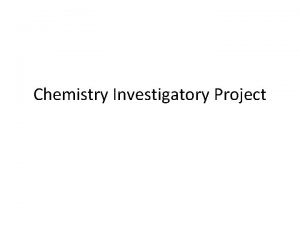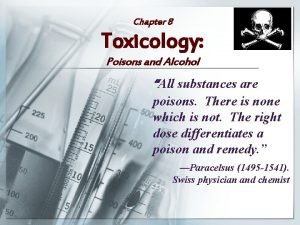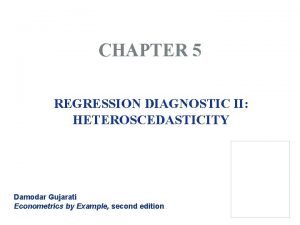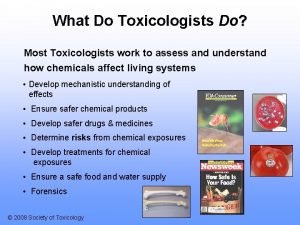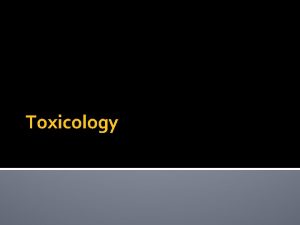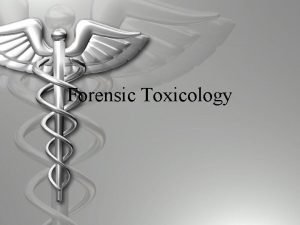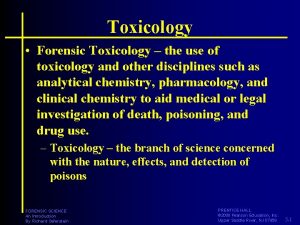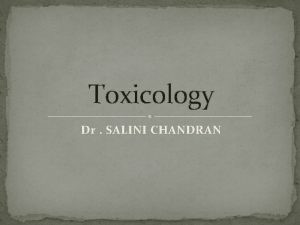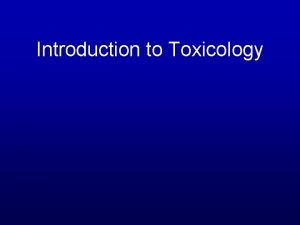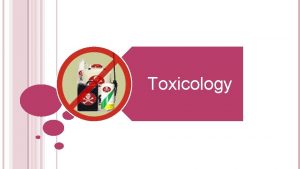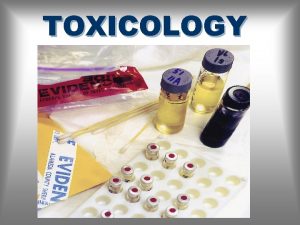ROLES OF TOXICOLOGISTS TOXICOLOGY TOXICOLOGISTS 1 Detect and











- Slides: 11

ROLES OF TOXICOLOGISTS TOXICOLOGY

TOXICOLOGISTS � 1. Detect and Identify Drugs and Poisons in body fluids, tissues and organs. � 2. Identify overdoses and drug use. � 3. Work in crime laboratories, medical examiners’ officers, hospital laboratories and health facilities.

TOXICOLOGISTS � 4. Measure the amount of alcohol or other abused drugs in the body for violations of criminal laws.

Role of Toxicologist � 5. Must be ready to assess the toxicity of the drug or poison. – the degree to which a substance (a toxin or poison) can harm humans or animals. � Toxicity

Roles of Toxicologist � 6. They collect and preserve evidence from the deceased. The following may be collected: � A. Blood � B. Organ Tissue � C. Vitreous Humor (liquid in eye) � D. Gastric Contents

Roles of Toxicologist � 7. They collect and preserve evidence from the living. The following may be collected: � A. Blood � B. Urine

Roles of Toxicologist � 8. They must detect, isolate and identify a toxic substance. � Drug extraction is based on the acidity and basicity of drugs.

Acids � An acid is a compound that donates H+ ions to another compound. � Acids are between a 0 -7 on the p. H scale. � The lower the number, the stronger the acid.

Bases �A base is a compound capable of accepting H+ ions. � Bases are between a 7 and 14 on the p. H scale. � The higher the number, the stronger the base.

Roles of Toxicologist � 9. In addition to urine and blood, hair samples may be collected. � Drugs become permantely entrapped in hair’s hardening protein structure.

Roles of Toxicologist � As hair grows, the drug’s location on hair shaft becomes a time marker for drug intake. � Drug use can be dated back to a period of weeks, months, or even years, depending on hair’s length.
 Adulteration of food investigatory project
Adulteration of food investigatory project Chapter 8 toxicology poisons and alcohol
Chapter 8 toxicology poisons and alcohol Chapter 8 toxicology poisons and alcohol
Chapter 8 toxicology poisons and alcohol Toxicology and applied pharmacology
Toxicology and applied pharmacology Annual review of pharmacology and toxicology
Annual review of pharmacology and toxicology Food safety and toxicology
Food safety and toxicology Drug identification and toxicology
Drug identification and toxicology Golden ticket active directory
Golden ticket active directory How to detect iridium in gold
How to detect iridium in gold How to detect heteroscedasticity
How to detect heteroscedasticity Stack canaries detect overflow
Stack canaries detect overflow How to detect heteroscedasticity
How to detect heteroscedasticity
